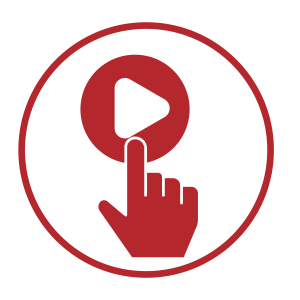11.2 Notetaking

Getting Started
- Can you identify what is important enough to take notes on during a class lecture?
- Do you find it difficult to listen to the professor and take notes at the same time?
- Does your current note taking style translate into good study notes?
- Do you remember better if you type your notes or hand write them?
Active Listening and Note Taking

Effective notetaking requires active listening and is important because it:
- Supports your listening efforts and helps you stay focused,
- Allows you to test your understanding of the material,
- Helps you remember the material better when you write key ideas down,
- Gives you a sense of what the professor thinks is important,
- Creates your “ultimate study guide.”
There are various forms of taking notes, and which one you choose depends on both your personal style and the professor’s approach to the material. Each can be used in a notebook, index cards, or in a digital form on your laptop.
No specific type is good for all students and all situations, so we recommend that you develop your own style, but you should also be ready to modify it to fit the needs of a specific class or professor. To be effective, all of these methods require you to listen actively and to think; merely jotting down words the professor is saying will be of little use to you.
![]()
The dental hygienist must be an ACTIVE LISTENER to interview clients AND TAKE NOTES to obtain an accurate medical history to make decisions regarding how to safely proceed with care. Dental hygienists are oral health educators and present individualized care plans to a client or community group. Communication skills would also be used to collaborate with other health care professionals to advocate for a client or community’s oral health needs.
Lara Timler, BA, BEd, RDH, MPH and Kelly Turner, BA.(Kin), R.D.H., PME
Styles of Notetaking
Lists
Lists note down ideas as they are presented. Lists may be short phrases or complete paragraphs describing ideas in more detail. This method is what most students use as a fallback if they haven’t learned other methods. This method typically requires a lot of writing, and you may find that you are not keeping up with the professor. It is not easy for students to prioritize ideas in this method.
The list method is usually not the best choice because it is focused exclusively on capturing as much of what the professor says as possible, not on processing the information. Most students who have not learned effective study skills use this method, because it’s easy to think that this is what notetaking is all about.
Outlines
The outline method places most important ideas along the left margin, which are numbered with roman numerals. Supporting ideas to these main concepts are indented and are noted with capital letters. Under each of these ideas, further detail can be added, designated with an Arabic number, a lowercase letter, and so forth.
The following formal outline example shows the basic pattern:
- Dogs (Main topic-usually general)
- German Shepherd (Concept related to main topic)
- Protection (Supporting info about the concept)
- Assertive
- Loyal
- Weimaraner (Concepts related to main topic)
- Family-friendly (Support info about the concept)
- Active
- Health
- German Shepherd (Concept related to main topic)
- Cats (Main topic)
- Siamese
Benefits
- Good method to use when material presented by the professor is well organized.
- Easy to use when taking notes on your computer.
- Allows you to prioritize the material.
At first you may have trouble identifying when the professor moves from one idea to another. This takes practice and experience with each professor, so don’t give up! Reading your chapter or assignments before class can also give you guidance in identifying the key ideas.
After class be sure to review your notes and then summarize the class in one or two short paragraphs using your own words. This summary will significantly affect your recall and will help you prepare for the next class.
Concept Maps
When designing a concept map, place a central idea in the centre of the page and then add lines and new circles in the page for new ideas. Use arrows and lines to connect the various ideas.
Benefits
- Great method to show relationships among ideas.
- Good if the professor tends to hop from one idea to another and back.
This is a very graphic method of notetaking that is especially good at capturing the relationships among ideas. Concept maps harness your visual sense to understand complex material “at a glance.” They also give you the flexibility to move from one idea to another and back easily so they are helpful if your professor moves freely through the material.
To develop a concept map, start by looking at your chapter headings and subheadings and use the course outline.
How to Create a Concept Map
- Select an overriding idea from the professor’s lecture and place it in a circle in the middle of the page.
- Create branches off that circle to record the more detailed information, creating additional limbs as you need them.
- Arrange the branches with others that interrelate closely.
- When a new high-level idea is presented, create a new circle with its own branches.
- Link together circles or concepts that are related.
- Use arrows and symbols to capture the relationship between the ideas.
For example, an arrow may be used to illustrate cause or effect, a double-pointed arrow to illustrate dependence, or a dotted arrow to illustrate impact or effect. As with all notetaking methods, you should summarize the chart in one or two paragraphs of your own words after class.
Cornell Method
The Cornell method uses a two-column approach. The left column takes up no more than a third of the page and is often referred to as the “cue” or “recall” column. The right column (about two-thirds of the page) is used for taking notes using any of the methods described above or a combination of them.
After class or completing the reading, review your notes and write the key ideas and concepts or questions in the left column. You may also include a summary box at the bottom of the page, in which to write a summary of the class or reading in your own words. The Cornell method can include any of the methods above and provides a useful format for calling out key concepts, prioritizing ideas, and organizing review work. Most colleges recommend using some form of the Cornell method.
If you are taking notes on your computer, you can still use the Cornell Method in Word or Excel on your own or by using a template someone else created.
“9.3 Notetaking” from Fanshawe SOAR by Kristen Cavanagh is licensed under a Creative Commons Attribution-NonCommercial-ShareAlike 4.0 International License, except where otherwise noted.

